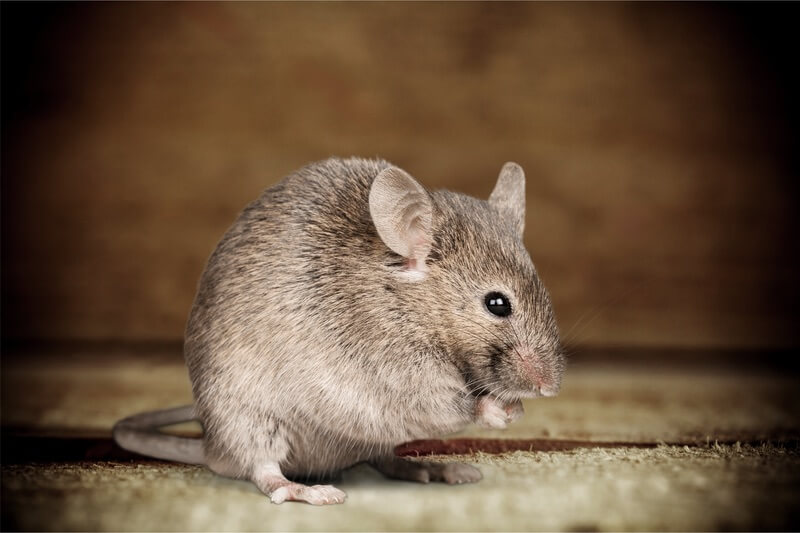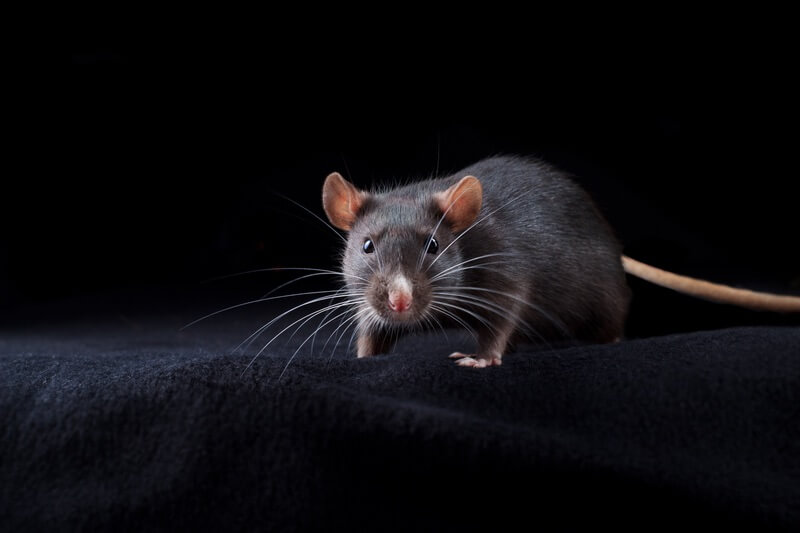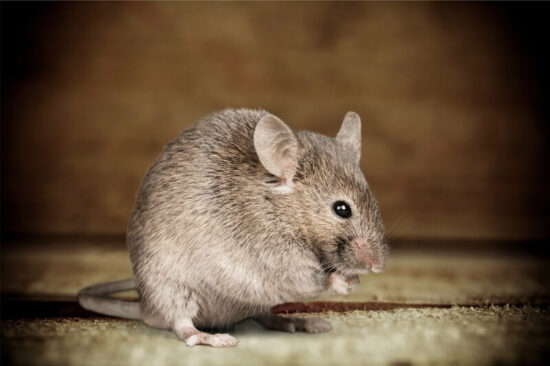Many homeowners wonder if keeping lights on will keep mice away, and the theory makes sense. Mice tend to be afraid of lights (as well as rats), so why wouldn’t this deter them?
Unfortunately, it’s a bit more complicated than that.
This guide will teach you if keeping lights on will actually keep mice away, and give you some more nuanced lighting methods you can try.
Table of Contents
Will Keeping Lights On Keep Mice Away?
If you’re dealing with mice in your home, you may have noticed that they tend to be more active at night. This makes total sense because not only are mice nocturnal animals, but the nighttime is when they are the least likely to encounter predators or humans.
Knowing that mice prefer the darkness often brings people to the conclusion that keeping lights on will keep mice away.
While this notion does seem logical, the reality is that it doesn’t really work. Mice are fairly intelligent and adaptable creatures, so keeping the lights on is not always a reliable option.
Leaving lights on at night may work for a short period of time, but it’s not going to work as a long term solution. For one reason, keeping the lights on in one area of your home will simply send the mice scurrying into rooms that are in the dark. You’d need to leave bright lights on all over your house for this method to have any chance of working in the long term.

As we mentioned above, mice are pretty adaptable, so even if you are always keeping the lights on, they will become desensitized to them, and they’ll eventually start to become bolder and ignore the lights altogether.
Food and water are pretty big incentives for mice, so the urge to wander around in search of food is often stronger than their fear of bright lights. Leaving lots of crumbs around, having dirty dishes in the sink or letting the trash overflow will create scenarios that are just too good for mice to resist.
Different Lights & Methods You Can Try
Even though keeping lights on will not keep mice away in the long run, it’s certainly fine to try this method if you wish. There are different kinds of lights that can be used, and you may need to experiment around to see if any of them work in your particular situation. Let’s take a look at some of the options.
The most basic method (and the one that likely is the least effective) is to simply leave a light on. This could be a light in the kitchen, a hall light, bathroom light or any other type of standard bulb. Mice may be intimidated by doing this for a while, but they will soon find ways to outsmart it or ignore it.
That’s why you’ll need to get creative if you want to keep mice away by leaving the lights on.
There’s a trend these days to decorate homes with attractive strands of white or colored lights. If this appeals to you, then you can use the lights to create a homey, stylish atmosphere while helping to keep mice at bay. Both ribbon lights and rope lights work pretty well, but keep in mind that using them is not going to keep mice away for the long run. For a more permanent solution it’s important to go with more tried-and-true methods. Often more drastic measures will need to be taken once mice are established in your home.
Ribbon Lights
Ribbon lights are basically a kind of flexible strip light that can be placed just about anywhere.
What makes this type of light more effective for keeping mice away is that you can change the colors of the lights, and you can even create different flashing effects. This is usually done with a remote control or through an app on your phone.
By changing things up, you may be able to keep mice afraid of the lights and prevent them from getting used to the brightness. Plus, the LED lights that are attached to the strip light are more of a deterrent than standard bulbs.
Rope Lights
Rope lights, another common type of decorative lighting, consist of a long tube that has a series of lights inside. These lights are usually LED lights, but they can also be standard incandescent lights. You can program them to flash, stay still and change color. As with ribbon lights, you might be able to keep mice away by keeping these lights on for a while, but it’s not going to be a permanent cure.
Strobe Lights
Some people go as far as to install strobe lights outside their home to try and scare mice and keep them away. The drawback to using this method is that strobe lights can be as annoying to humans as to mice, and some people even have adverse reactions to them. They’re not going to work for long anyway, so we don’t recommend taking this drastic measure.
If your mouse issue is bad enough to warrant the use of strobe lights, then you should be trying more aggressive strategies (or talking with a pest control specialist).
Will Sleeping With Lights On Keep Mice And Rats Away?
Just the thought of having a rat or a mouse roaming around your house while you sleep (or climbing into your bed) can be enough to keep you awake at night. Since these pests prefer darkness and are often afraid of light, it would seem logical that sleeping with the lights on would keep rats and mice from invading your sleeping or living space. Unfortunately, this is not really a solution that is going to work.
Sleeping with lights on might keep mice and rats away in the very beginning, but these critters are very adaptable and will soon learn that it’s safe to venture out of their hiding spots while you and your family are asleep. Plus, it’s not likely that you are going to sleep very well with bright lights on anyway!
Do Rats Like Light Or Hate It Like Mice?
Just like mice, rats are nocturnal creatures and will tend to shy away from any type of light, especially bright light. One reason for this is that a rat’s eyes are very weak and sensitive and may be irritated by any kind of bright light, especially flashing lights. The other reason why they tend to prefer darkness is that they are safer from predators and other dangers. Rats will hide in your walls, attics and basements until they can prowl about under the cover of darkness.
In general, rats appear to be a little more averse to lights than mice are, but they will certainly venture out into a well-lit area if there is the incentive of food or water.
Lights & Methods You Can Use For Rats
We talked earlier about how it’s possible to keep mice away (at least temporarily) by using a variety of lights like ribbon or rope lights. You can utilize the same kinds of lights for rats, but you can be even more strategic about it.

The best kinds of lights to use to repel rats are ones with very bright lights and the ability to flash in a variety of patterns. Colored lights are not very effective against rats because they have a limited ability to see colors. Rats cannot see the color red, but they are able to perceive blue and green.
Try Strobe Lights
Because rats hate bright, flashing lights, you could try using strobe lights. Strobe lights are really not a recommendation for use inside of the house, but using them outside will often, for a time, keep rats from coming near your home. However, strobe lights usually need to be combined with some kind of noise for them to be truly effective.
What About Motion Sensor Lights?
Flashing strobe lights are not for everyone, so motion sensor lights can make a good alternative. As with strobe lights, motion sensor lights are designed to be used outside. If you decide to try these lights, then you will need to place them where you think that you have the most rat activity. Heavy traffic areas and near trash cans are good spots to try.
The problem with motion sensor lights for rat control is that once you go through the time, money and effort to set them up, they probably won’t keep the rats away for very long.
Do Ribbon Lights Work For Rat Control?
Strobe lights and motion sensor lights are for outside rat control, but that still leaves rats that are already in your home. To deal with indoor rats, many people opt for something such as ribbon lights.
Ribbon lights, sometimes called LED tape lights, are often used for home decoration and enhancement. When strategically placed, they can keep rats away just like mice. They are not very effective in the long run, but when set on the brightest flashing mode, they may work for a while.
White lights are the best for rat control, but it’s been found that blue LED lights may actually cause retinal damage in rats. Colored lights, while pretty, are not known to be as effective.
Give Rope Lights A Try
Rope lights, while similar to ribbon lights, are made up of individual LED bulbs placed into a long, plastic tube. These lights can often be controlled remotely through your phone or by a remote control. If you opt for rope lighting, make sure to program the lights to vary in brightness and flashing pattern. Don’t expect much from rope lights, however. Rats, desperate for food, will not be kept away by these lights for long.
Some Other Tricks To Try
Have extra holiday lights around? You can try hanging them in your home, but these lights are usually not bright enough to make any real difference. The real way to deal with a rat issue is to keep your home clean and free of crumbs, take out the trash every day, keep your yard clean and get the help of a pest control professional.
Conclusion
Keeping lights on will keep mice and rats away for a bit, but it’s not something you can rely on in the long run. Even the fancier lighting methods will lose effectiveness quickly.
That’s why it’s a good idea to try other options if you’re serious about dealing with the mice in your home. If you have any questions or need some tips, you can either ask us directly or check out our other resources.


